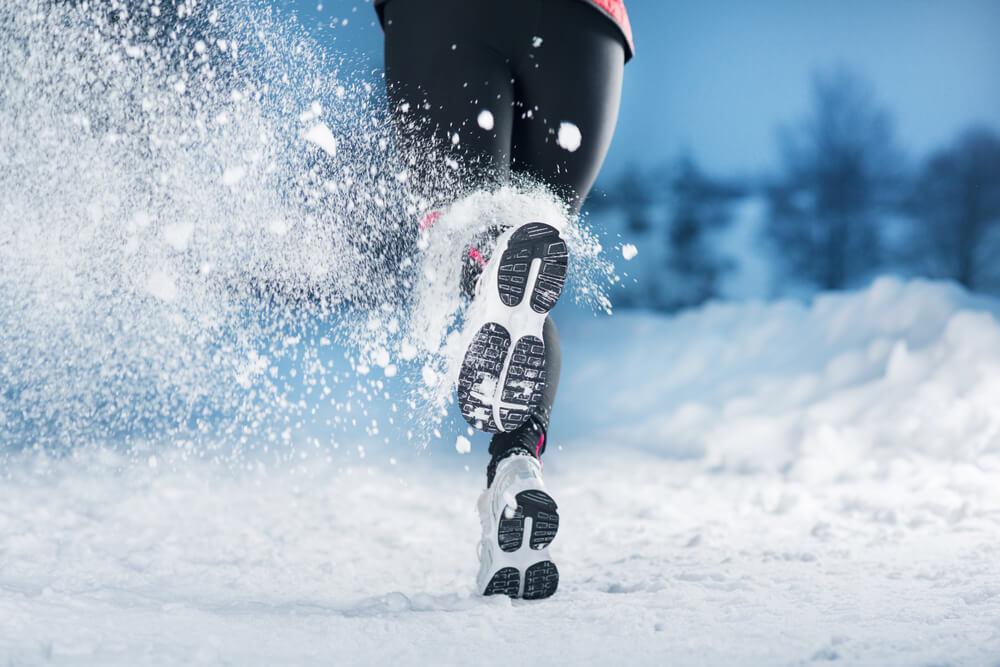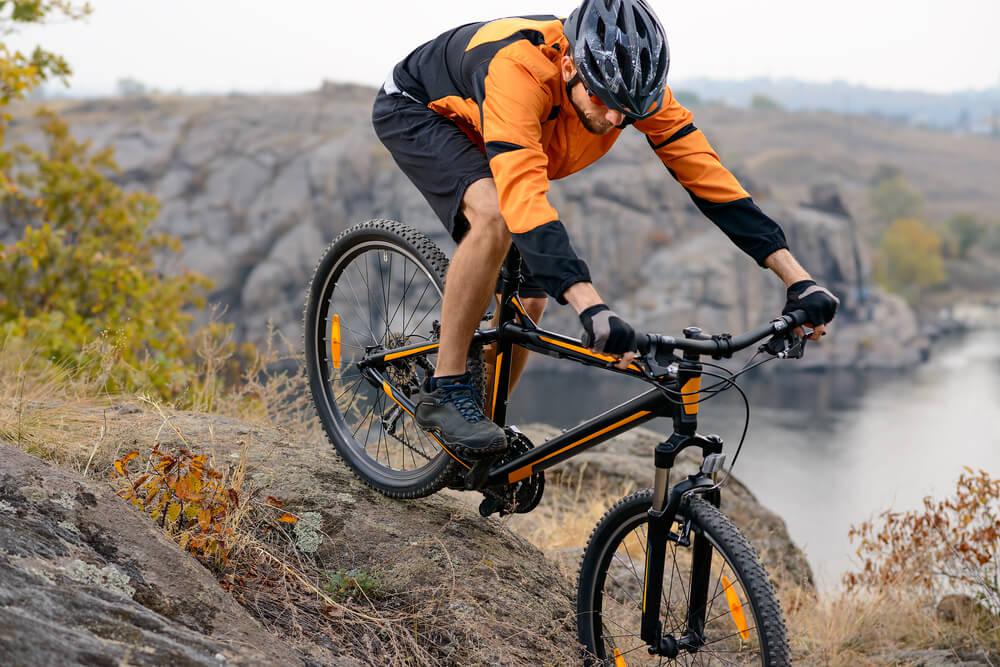
Winter is here and that means you can now take your training up to a whole new level outside of the gym. Are you game to take on the elements in your next workout? Read on to find out how!
When planning an exercise regimen, we tend to focus solely on the type of workout they’re doing. We rarely think about the environmental conditions in which we’re exercising.
We put all of our energy into the “what” of a workout, but never the “where” or “how.” As it turns out, surroundings play a large role in the health and effectiveness of your fitness routine. That’s especially true when it comes to temperature. So let’s delve into the world of cold weather training.
If you’ve never heard of this type of exercise before, don’t worry. We’re going to cover what exactly cold weather training is and its various benefits. We’ll also discuss what specific type of cold weather training is most effective and how to incorporate it into your lifestyle.
Luckily, cold weather training is pretty self-explanatory. Also known as temperature training, it’s simply the practice of regular exposure to mildly or even significantly cold air temperatures while being active.
Where Should I Do My Cold Weather Training?
Your body is always looking for new ways to challenge itself. Why not use climate to your benefit? The best part is, cold weather training can work in countless ways so you’ll never have to worry about hitting a plateau or getting bored.
It can be done inside or outside, with things you consider to be hobbies or with more standard gym-style workouts. As long as you’re feeling that coldness, you’re good to go. Why? Cold weather training boosts the amount of energy your body has to expend to keep your core temperature up.
And, what’s considered cold enough differs from person to person. For example, 50°F can feel like 20°F to a Californian, and is therefore enough to be effective in cold weather training for that person’s body. Just make sure your body is kept cold enough to jolt it into working harder than it normally would under the conditions it’s typically used to, and any form of exercise goes.
This includes anything from winter sports (skiing, snowboarding, ice skating) to running to weight training and beyond. There are even gyms that specialize in cold weather training. It seems like many people and places these days are taking notice of the added benefits gained when you take your workouts to the chilly side.
What Are Some Of The Benefits?
While the cold might not be very fun to get used to, the benefits of temperature training should definitely be enough to warm your heart up to it. Perhaps the most obvious one is that falling temperatures will help you burn extra calories and shed excess weight.
The colder air means that your body has to work harder to keep your internal temperature warm, and therefore your body will burn more fat. These conditions will also challenge you more physically. This in turn raises your metabolism and uses your fat reserves to produce the extra energy that’s needed for this type of workout.
In terms of mental health, it can help fight Seasonal Affective Disorder (SAD). Slowing down physically, a common occurrence during the winter months, can bring you down psychologically and cause SAD, also known as the winter blues.
Working out in the fresh cold winter air oxygenates your body, produces mood-boosting hormones, relieves depression, reduces stress/anxiety and keeps your mind invigorated.
What Is The Science Behind Cold Weather Training?
A research study at Duke University found that 30-minute cardio circuits are most effective in curing your gloomy winter outlook. That’s only the mental aspect.
Back to physical health, frigid climates improve performance and stamina. US Army researchers gathered data from marathoners over the span of a few years. They found that the athletes were on average only 1.7% slower than the top course record when the temperature was between 33.8°F to 50°F. They also discovered that times worsened dramatically as the temperature became hotter. They concluded that the ideal marathon temperature is at or less than 41°F.
Lung capacity is positively affected as well. Exercising in noticeably colder than normal conditions trains your body to use oxygen more efficiently, pushing your lungs to be tougher and work better. Your overall endurance and cardiovascular system are strengthened as well.

The immune system will also thank you for remaining active in the cold.
Temperature training is your best defense against colds and seasonal flus. It boosts your immune system so much in fact, that research from the Mayo Foundation for Medical Education and Research found that you could slash your risk of the flu by 20 to 30% with just 45 minutes per day of this training.
We could go on and on listing the benefits of taking your workout down a few degrees, but you likely get the idea.
There are so many different types of cold weather training, it is near impossible to choose just one. So we’re going to cover two that are most effective. One is the tried-and-true workout known as running. The other is a relatively new workout that’s quickly catching on, fat biking. While they are each quite different, they both offer the wonderful benefits that all cold-weather training workouts do.
The Basics Of Cold Weather Training: Running
Running in cold weather sounds like a no-brainer. But, it can be tricky and even dangerous if the proper precautions aren’t taken. With the following tips, your frosty running regimen will be safe and successful.
Let’s start at the beginning: Make sure you complete a proper warm-up. The purpose of a warm-up is exactly that, to increase your internal body temperature in preparation for the exercise(s) ahead.
A dynamic warm-up will take your joints through their full range of motion and activate the specific muscles that are going to be used.
For running, that is primarily the legs and feet: Thighs, knees, calves, ankles, toes, etc. Warming up will improve blood flow to the limbs and increase muscle compliance, which is especially important in the cold.
How Should I Dress?
After the full warm-up, it’s time to make sure you’re dressed right. This is a precise science. The main thing to keep in mind is that you want to avoid overdressing. You’re going to feel a great deal warmer once you get moving, so you should definitely feel a bit chilly when you start your run.
If you’re too warm and comfortable when you begin, you’re going to start excessively sweating very early in your run, which as we’ll cover shortly can be hazardous to your health. A good rule of thumb is to dress as if it’s 20 degrees warmer outside than it actually is. If it is extremely cold, wear two or three layers. If it’s moderately cold and dry, wear two layers.
Protect your hands and feet by wearing warm socks and gloves.
On milder days, running gloves are sufficient enough to absorb moisture. For colder days, mittens are a better choice because your fingers will be able to share the body heat. You can add a wicking sock liner under warm fleece or wool socks. Just make sure you have enough room in your running shoes to comfortably accommodate all of that.
After your hands and feet are, literally, covered, don’t forget about your head. About 40% of your body heat escapes through the head. Wearing a hat will help prevent heat loss, which will give your circulatory system more heat to distribute to the rest of your body. When it’s extra cold, you can wear a face mask or a scarf over your mouth to protect your face and warm up the air you breathe.

This Should Be Your Action Plan
Now that you’re all dressed, you’re ready to hit the pavement. While running in these conditions, it’s important to start slow and adjust your expectations. You shouldn’t plan to make any increases in mileage or to add speed work to your training regimen while in frigid temperatures. Just the act of exercising in such an extreme environment that your body isn’t used to is plenty enough of a challenge.
Despite the cold weather, you’ll still lose fluids through sweat. Icy air has a drying effect, which can put you at risk for dehydration. So make sure you drink lots of water before, during and after your run.
The direction you run in also matters. Try to plan your run so that you start heading into the wind and return with the wind behind you. If you do your run in reverse, you’ll be all sweaty heading back and the wind blowing on your face will freeze you up fast.
Listen To Your Body
Finally, after your run, it’s important to see how you’re feeling. You may develop a skier’s hack, also known as a transient cough.
If you get wet from rain, snow or sweat in cold temperatures, you’re at a higher risk for hypothermia. Hypothermia, in case didn’t know, is a drastic lowering of your core body temperature, and is extremely dangerous and potentially fatal. Remember when it was mentioned that dressing too warm for your run will cause you to excessively sweat, which can be hazardous and that we’d cover why shortly? Hypothermia is the reason.
If you’re at all wet, or even damp, after your workout, change your clothes, dry off right away and get yourself warm. Follow these simple tips and you’ll have a great run from start to finish.
The Basics Of Fat Biking
You’re likely wondering, what exactly is fat biking? It’s one of the hottest new trends in the cycling world, earning its name because of the bike’s big, fat tires. By definition, a fat bike is a bicycle with oversized tires, usually from 3.7 to 5 inches and rims twice as wide as a standard mountain bike tire.
This mass is purposeful because it increases the contact area on the ground. This means more tire and traction on the ground to allow both you and the bike to float over soft terrain such as snow, ice, dirt and sand. The extra air in the tires provides suspension, making the ride less rigid and more comfortable, especially over technical terrain.
Basically, whatever type of territory or land you’re hoping to ride on, the fat bike has you covered. The most challenging landscapes are made much easier. Although fat bikes make difficult trails more manageable to ride, it’s still a rigorous workout.
Fat biking in the winter can burn well over 1,000 calories per hour. This is because even though you may be going over snow and soft areas, it takes much more physical effort to move forward on a fat bike during the cold winter. This makes it a peaceful, yet challenging, workout that’s highly beneficial.
Fat Biking Strategies
The tips for safely and successfully including fat biking in your workout routine are quite similar to running. Dress lighter than you think you will need to, since you’ll most definitely be sweating.
In terms of where to go, many Nordic Centers and ski shops have opened trails to fat bikes. These places provide a well groomed trail system and near perfect riding conditions. You can also ride on local riding trails, when conditions allow it.
Many places also offer rental bikes, so you don’t have to spend money on a fancy fat bike before trying it out to see if you like it. It’s indeed a niche sport, but if you’re feeling adventurous and looking for something new, fat biking may be the perfect type of cold weather training for you.

Conclusion
Cold weather training is something that anyone and everyone should try. With so many options and countless benefits, you’re bound to find a type of temperature training that you’ll love.
Done right, it can turn into something you stick with and look forward to. So plan your attack and be prepared. Your body, both physical and mental, will thank you for this jolt of frozen goodness.
– By Nicole Dimacale
Latest posts by Terry M (see all)
- Garage Gyms - Aug 1, 2018
- Kettlebells – Why They Should Be Added To Your Routine. - Jul 24, 2018
- Weight Belts: What Are They Really For? - May 31, 2018









[…] By Terry Asher […]